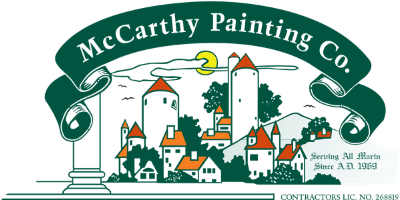A painting job may seem simple at first but there are actually more tasks involved before and after the main event than just giving your home or office a fresh coat of paint. Any professional painting contractor may do any of these 8 prep work tasks to ensure you end up with high-quality paint that will last for years.
- Protect your home – windows, doors, electrical outlets
Whether it’s for exterior or interior paint jobs, nobody wants paint drips, splatters, or smattering in random areas of the work area. So before your paint contractors begin their painting, every nearby structure that isn’t to be painted like windows and sills, doors, or electrical outlets must be adequately covered. A painter’s masking tape is especially helpful in covering tricky nooks and corners.
- Clear impediments for exterior jobs
Whether it’s moving your potted plants away from the walls, tying tree branches, or cutting some that have reached your home’s walls, these steps may be done to ensure a smoother and faster way of working on your walls.
- Move furniture and appliance
If it’s for an interior paint job, 10 out of 10 times, a contractor will advise you that any furniture or appliance in the work area must be moved temporarily. It can be moved to the center of the room if the area has ample space to not make it a hindrance for the painters or moved to another part of the house like your garage. It is not advisable, however, to move furniture and appliances into the hallways as it will become an obstruction to everyone.
- Protect the floor or ground from paint residue
Professional painters will have professional drop cloth to cover the ground or flooring of their work area. They may also fortify it better with plastic sheets but these sheets are more prone to cuts and slits that defeat the purpose of protecting the work area’s flooring.
- Manually clean or power wash the area being painted
Ah, our favorite part of the job (for exterior paint jobs only), but only second to painting, of course! If there have been years, if not decades, of dirt, dust, and grime on the surface areas, these contaminants must all be cleaned out of the surface area first before painting. For exterior painting jobs, a good old powerwash is the fastest way to lift off the dirt. A therapeutic task for the crew and a good facelift for the surface area, you can instantly see the difference in the results.
Meanwhile, if it’s for an interior painting job, a warm water-based solution can take off most dust and grime. However, if it’s for a heavily stained area like the kitchen, a grease-removing detergent should be added. Mildew is another interior surface problem we usually see in homes. No professional painter will paint over mildew and so a water and bleach solution will be needed to clean it off the surface.
- Sand or repair the work surface
Okay, time to clear something up—sanding may or may not be done for your painting job. Why? Because the sanding process in any painting prep work depends on the area to be worked on. If your walls have some irregular bumps and rough spots, it needs to be sanded. If it was painted with glossy paint before, it also needs to be sanded. If there are cracking or flaking paints on the surface, those need to be sanded away, too.
- Applying a coat of primer.
Is primer really needed for every single paint job, you ask? Yes, it is. Primers act as a protective layer for your surface especially if it is porous while also maximizes the color out of your paint. Primers ensure your surface is smooth and stable for the paint to cling onto and it also hides imperfections on the surface.
- Clean up
After the primer and layers of paint and accents have been applied and dried, there’s nothing else to do but clean and tidy up! Drop cloths removed, masking taken off and everything that has been moved or stored away can now be brought back into the room.
While these prep tasks are a good list to start with, keep in mind that your hired contractor may do other prep work unique to their work process. An in-home inspection is also the best way to determine which of these prep work tasks are needed for your painting job.


